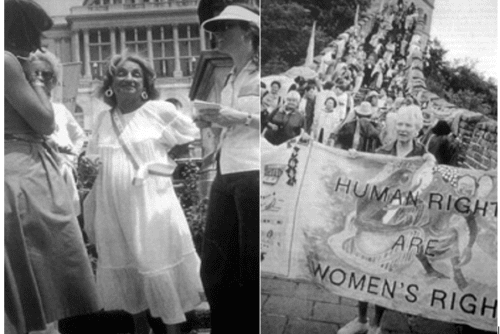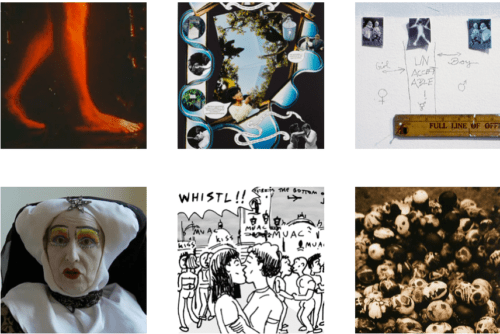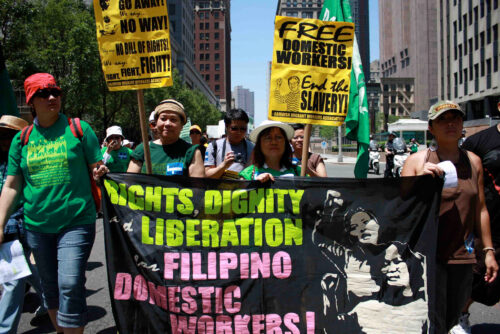Jewish women have changed America. The leadership of Jewish women in American social movements, particularly in the second wave of feminist movement, is striking. This includes well-known figures like Bella Abzug and Betty Friedan, but also includes a wide range of women who have led major changes in spheres such as journalism, the arts, business, and the academy. Moreover, Jewish women are changing America. After more than four decades, leaders of the second wave, like many of the panelists at the conference on which this issue is based – Shifra Bronznik, Sally Gottesman, Judith Hauptman, Elizabeth Holtzman, Paula Hyman, Norma Joseph, Irena Klepfisz, Judith Plaskow, and Letty Cottin Pogrebin – continue to make change as they have throughout their now illustrious careers. These efforts are being met by those of younger generations, who have taken up the mantle of social change on behalf of gender equity. Some of the most exciting work that is being done in feminism today is undertaken by a younger generation of artists, activists, and scholars, young feminists who are producing their own publications and doing so in their own idioms, including Bitch: A Feminist’s Response to Pop Culture, and Heeb: The New Jew Review; who are reviving previous cultural forms like Klezmar music and Yiddish plays and poetry; who are challenging the boundaries of gender convention and who are continuing the fight against sexual violence.
Since at least the 1960s the presumption has been that generational change also implies generational rifts. “Don’t trust anyone over thirty,” is a well known maxim of the 1960s (one that became much harder to follow after young activists moved beyond thirty themselves). This perception of the inevitability of generational conflict has been applied to feminism as well. Successive surges of activity have been identified as absolutely distinctive waves. The second wave, beginning in the 1960s, and following on a first wave that began in the mid-nineteenth century and continued at least until women gained the right to vote in 1920, has been succeeded by a third wave that began in the 1990s. Now, as members of the generation identified with this third wave move beyond thirty, questions have been raised as to what to term the next generation of feminists. Generation X has given way to Generation Y in the mainstream, must there be a similar passing of the torch in feminism?
This issue of Scholar and Feminist Online takes a different approach to these questions. Rather than presuming that generational difference is the same as generational divide, “Jewish Women Changing America” takes the approach that exploring the meaning of Jewish women’s leadership in American feminism across time and thus across generations might best be pursued through conversation. And so, beginning with the insight that to understand the U.S. and to understand American feminism, we must take Jewish women into account, we set out to build a conversation across generations, first in a conference sponsored by Barnard’s Ingeborg, Tamara and Yonina Rennert Women in Judaism Forum and now in this issue of S&F Online. We brought together women leaders across multiple generations (as moderator Laura Levitt pointed out, there is a forgotten generation that came of age after the initial surge of the second wave in the 1960s and 70s and before the beginning of the third wave in the 1990s) to see what they might have to say about Jewish women changing America, historically, in the present and in the future. We have pursued this project in conjunction with the Jewish Women’s Archive (JWA) which has independently begun a major exhibit on the often unremarked, and nonetheless remarkable, fact that Jewish women have played an especially crucial role in changing the world for the better, particularly in feminism. This issue of S&F Online provides both highlights of some of that project and links to its online component in its entirety. We thank JWA for their mutual participation and invite you to explore this important exhibit in full.
When the various participants in our conference came together for conversation spread across four panels and two days, we did find some of the generational tension that is forecast by cultural expectation. Yet, there are also striking similarities between second wave activists like Kelpfisz, who uses Yiddish in her poetry because it is part of the Eastern European culture of her youth, much of which was lost in the Holocaust, and young activists, who are reclaiming Yiddish culture in part because it was not a part of their own upbringing. These continuities are striking, despite what seem to be clear differences of style in generational approaches to feminism. While the activists of the second wave fought for lesbian and gay rights, for example, their heirs present a more decidedly queer sensibility. Yet even when it comes to style one can begin to wonder how great the differences really are. How different is the irreverent style of queer performance art from the choices of the early second wave, as documented by JWA, to start the Women’s Liberation Rock Band?
One of the main issues of real disagreement surfaced in the opening panel and reverberated in various ways throughout the conference. It was picked up by moderator Laura Levitt, who heard the older generation ask the younger, “Why aren’t you more political?” Liz Holtzman and Letty Cottin Pogrebin both express concern that young women are not willing to do the dirty work of entering the mainstream political arena and institutionalizing change for future generations, while young women are concerned that the political process in the United States is simply too corrupted by money and media spin to provide a real site for change. (You can listen to that conversation in the video clips from the panel).
In the midst of this discussion, Irena Klepfisz asked from the audience whether the older generation has bequeathed to younger feminists enough of a positive vision. In particular, have those who made the second wave, offered a message of hope to the younger generation, a message that could be sustaining as well as motivating?
Klepfisz’s question raised a theme that echoed throughout the conference and across the age spectrum: Where do we go from here? Feminist accomplishments, in changing both Judaism and the mainstream, have been significant, as they were eloquently listed by a number of participants: the election of women to Congress, movement of women into the Rabbinate, the development of new rituals, the expansion of feminist scholarship, young women’s interventions in popular culture. And yet, major challenges also remain, particularly after more than twenty years of increasing political conservatism. Mainstream advances are being lost. As Liz Holtzman pointed out, over thirty years after being elected at the age of thirty-one, she remains the youngest woman elected to Congress, a record she thought would be broken easily and quickly. The status of women in politics may be increasing, but it has in no way been a directly upward journey. Similarly, while there are a number of strong, dynamic Jewish women’s organizations and projects, like Ma’yan of the Jewish Community Center in Manhattan, the leadership of major organizations within the Jewish community has remained surprisingly and resolutely male. And as Shifra Bronznik noted, conservatism is not the only problem: even those who are politically liberal still may not take women’s issues seriously, at least not seriously enough to act upon.
Questions of continuity and difference among the generations were not the only sites for lively debate, however. Nor was generational difference the only form of diversity that was explored. Racial and ethnic differences among Ashkenazi and Sephardic Jews have become a more frequent part of Jewish conversations, but the conference also took up the complex issue of African American Jews, who are too often caught between communities that are now presumed to be in conflict (although such a presumption was not always so), along with Jews from communities, like the Mizrahi Iranian Jewish community, that are less frequently recognized in the traditional sense of ethnic divisions. Like the generational differences, the presentations by Katya Gibel Azoulay, Khadijah Miller, and Gina Nihai presented differences in issues and in approach to those issues, as well as common commitments to gender equality and social justice.
Denominational differences took center stage in the panel on “Changing Judaism.” Panelists reported varied struggles and strong feminist presence across the denominations and there was widespread appreciation for the rapidly growing Jewish Orthodox Feminist Alliance (JOFA). Both the panelists and the audience became interested in the question of whether it is possible to develop more cooperation across denominations. As moderator Judith Plaskow asked, “Are there ways we can offer more support to each other across those lines?” Or would it hurt the projects of Orthodox women, for example, if non-Orthodox feminists were significant and visible contributors? (You can listen to the ensuing conversations in the video clips from the panel). Danya Rutenberg raised the question of whether feminism is better pursued within denominational institutions or outside of them. While denominational institutions supply resources and structures for change, they can also provide obstacles. Perhaps there is more freedom, if less organization, outside the denominational frame. And perhaps also there is the possibility for other forms of cooperation, including cooperation with various Jewish groups that increasingly do not identify with denominational affiliations.
Concerns were also raised at a number of different points over the course of the conference that women are sometimes blamed for increasing assimilation of Jews in U.S. culture and a general sense of decline for the American Jewish community. Women have been accused in the Jewish press, for example, of both failing to maintain high birth rates and promoting assimilation through participation in mainstream movements like feminism. Paula Hyman provided an historical perspective on this charge: given that it has been reiterated in various forms since at least the nineteenth century, problems of Jewish assimilation can hardly be the fault of twenty-first century feminists. Moreover, as Sally Gottesman pointed out, it is boys who leave active participation in Judaism at higher rates than girls: 60% of boys and 40% of girls move away from participation after bar and bat mitzvah, respectively. Sally proposed that the urgent project for feminists is not finding a way to get women back into the business of holding up the Jewish birth rate, but finding ways for Jewish feminism to address more men so as to communicate feminist excitement about Judaism.
The issue of U.S. policy toward Israel was clearly on people’s minds, as well. What the panelists in conversation with the audience provided was a sense that there is a need not only for public discussion of such policy, but there is also a need to consider how that discussion might best take place. For the “Changing Culture” panel, Faith Jones presented on the efforts of the Jewish feminist journal, Bridges, to produce an issue on Israel. She related how difficult it was to come to any agreement about this issue even for a group of relatively like-minded people like the Bridges editorial collective. Given how difficult these discussions are, other panelists suggested that one of the great strengths of various art forms is the ability to present issues in ways that enable discussion. Rachel Havrelock talked about the way in which her play “From Tel Aviv to Ramallah” allowed audience members coming from various social and political positions to leave the theater in discussion with one another. This panel was followed by animated conversation with the audience about whether the discussion of Israel is actively shut down in some communities, or whether with commitment to diverse perspectives and a sense of respect for one another, some communities have facilitated such conversations, no matter how difficult. From the audience Paula Hyman reminded us that throughout the course of the conference, “one of the things that we’ve been trying to do is to avoid stereotyping.” Having spent our time exploring the diversity of Jewish communities and positions, we should also look to the various places in different Jewish communities where this conversation might be happening.
Haddasah Gross pointed out that we also should not allow discussion of Israel to overwhelm all the other issues facing Jewish communities and Jewish culture. Culture is important for so many different reasons, from the ways in which second-wave feminists used art and ritual expression to make a space for themselves as not just feminists, but Jewish feminists, to the various art forms, from gender performance to queer yiddishkeit that now provide a site for young people to work through their sense of Jewish identity.
In this issue we provide you with just a sampling of some of these wide ranging cultural productions, from “Farlangen” by Metropolitan Klezmer to “’67 Remembered” by Irena Klepfisz. Together all of these materials – the transcripts and videos of the conference, the artistic and cultural projects, and the historical archives and oral histories of the Jewish Women’s Archive – add up to crucial documentation of the fact that Jewish women not only have changed America; they are changing America.
Overall, the various conversations that have occurred in producing these materials indicate that generational difference may not be the most important divide facing Jewish women or Jewish feminists, but that the strategies learned in cross-generational conversation are widely applicable. Mutual respect, the ability to listen, a willingness to grant that women do not all share the same position in society or the same set of concerns, and a simultaneous willingness to find sites where women can work together in mutual support: these skills, all of which are in evidence in the conversations presented here, are crucial for continued forward movement and social change. We invite you, our reader, not just to peruse this issue, but to join the conversation.




